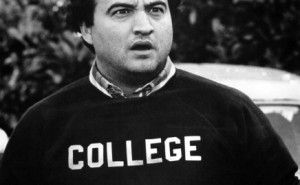Cal State Presidents Receive Perks and Benefits Worth 50% of Base Pay
By JOHN HRABE
California State University presidents receive perks and benefits worth as much as 50 percent of their base salaries, or more than $145,000 per year, according to compensation data released by two campuses. Cal State Sacramento and San Jose State University disclosed to CalWatchDog.com the total compensation paid to both university presidents during 2008-10. The disclosure by the two universities represents the first public estimation of the total compensation paid to the state college’s top administrators.
The average base salary of the state’s 23 college presidents is just under $300,000 per year, a figure that does not include other widely reported benefits such as a car allowance, bonuses paid by tax-exempt college foundations and free housing. Total compensation includes health insurance, dental care, vision coverage, retirement benefits, long-term disability coverage, life insurance, paid Medicare taxes and employer-paid Old-Age, Survivors, and Disability Insurance (OASDI).
While the Cal State Chancellor’s Office has readily disclosed the value of the housing allowances on its “Executive Compensation Summary,” there has been almost no estimation of the cost of other presidential perks.
In 2008-09, Cal State Sacramento’s President Alexander Gonzalez received a base pay of $294,999.96. He also took home an additional $145,405.15 in perks and benefits, bringing his total compensation to $440,405.11.
During the same period, San Jose State University’s then President Jon Whitmore received a base salary of $299,615.03 and $100,293 in other benefits, not including housing. Total: $399,908.03.
CalWatchDog.com has asked San Jose State University to clarify whether Whitmore received a housing benefit or allowance during his brief tenure at SJSU.
Administrators’ Retirement Benefits: More Than State’s Per Capita Income
Retirement benefits represent the single largest amount of previously unquantified benefits. Sac State and San Jose State’s presidents received more in taxpayer-funded retirement contributions than the state’s per-capita personal income, $42,578 in 2010.
Sac State’s Gonzalez received retirement contributions of $48,893,29 in 2008-09 and $45,289.94 in 2009-10. San Jose State’s Whitmore collected $49,641.30 and $50,388.37 in 2008-08.
In 2008-09, Gonzalez’s other benefits included $961.38 for dental insurance, $10,846.43 for health care, $109.56 for vision, $501 in life insurance, $143.04 for long-term disability care, $5,328.85 in employer-paid Medicare taxes and $6,621.60 for OASDI.
For 2009-10, Gonzalez’s other benefits included $991.68 for dental insurance, $11,149.87 for health care, $109.56 for vision, $501 in life insurance, $150.12 for long-term disability care, $4,942.91 in employer-paid Medicare taxes, and $6,621.60 for OASDI.
Differences in Pay
Kimberly Nava, Sacramento State University’s Director of News Services and the first Cal State public relations official to voluntarily disclose to CalWatchDog.com the total amount of executive compensation, said that the difference in salary for the two years was due to furloughs.
In 2008-09, Whitmore’s other benefits included $22,916.63 in bonuses paid by the tax-exempt college foundation, $16,145.05 in welfare benefits, $11,000 in auto allowance and $590.37 in insurance coverage worth greater than $50,000. For 2009-10, Whitmore’s other benefits included $24,999.96 in bonuses paid by the tax-exempt college foundation, $15,346.64 in welfare benefits, $12,000 in auto allowance and $651.12 in insurance coverage worth greater than $50,000.
San Jose State University’s disclosure of Whitmore’s pay also raises new questions about why the college’s auxiliary foundation, the Tower Foundation of San Jose State University, reported zero compensation paid by the organization or any related organizations to more than a half dozen high-ranking university personnel, including the college’s president, provost, athletic director and several vice-presidents, on federal tax returns for 2007, 2008 and 2009. Larry Carr, SJSU’s Associate Vice President for Public Affairs, told CalWatchDog.com that he would be available Monday to provide an explanation.
In recent weeks, CalWatchDog.com has exposed a series of attempts by Cal State officials that has misled the public about CSU’s executive compensation. Last week, CalWatchDog.com first reported that the California State University Office of the Chancellor understated the annual compensation of San Francisco State University President Robert Corrigan by as much as $52,787.
Earlier this month, CalWatchDog.com revealed that Cal State Los Angeles President James Rosser reported $515,612 in annual compensation to the IRS for the 2009-10 tax year. In at least five instances, Cal State officials have falsely claimed or implied Rosser’s compensation was nearly $200,000 less. On March 12, the California State University system falsely claimed to have received a 2012 Sunshine Award, which recognizes “the most transparent government websites in the nation.”
Related Articles
State Prolongs Victims' Nightmare
OCT. 1, 2010 By ANTHONY PIGNATARO The state of California is apparently so dysfunctional that it can’t even kill a
Little Hoover Critiques Community Colleges
JUNE 28, 2011 By DAVE ROBERTS If California’s educational system were a student, it would be made to sit on
Drought Wars: Where did the farm water go?
Where did that farm water go? That’s a major question stalking California during its record drought. The finger-pointing sure is




